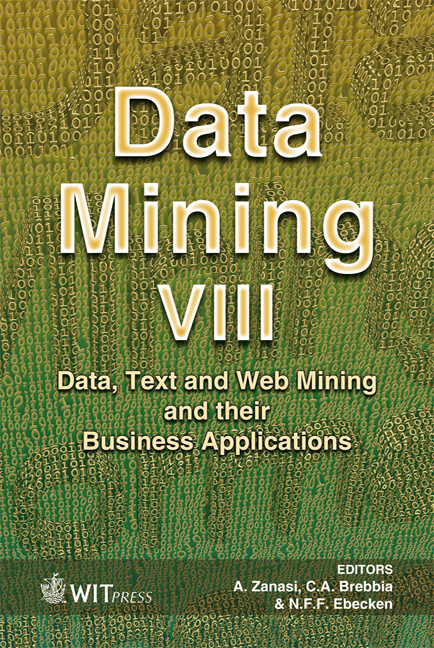A Re-examination Of Volatility Spillovers In European Government Bond Markets Using A Multi-objective Artificial Network
Price
Free (open access)
Volume
38
Pages
10
Published
2007
Size
361 kb
Paper DOI
10.2495/DATA070261
Copyright
WIT Press
Author(s)
G. H. Dash, Jr. & N. Kajiji
Abstract
In this paper we extend prior efforts to engineer an efficient mapping of volatility transmission across various western- and central-European government bond markets. Prior research efforts report that the closed-form derivation of the regularization parameter embodied by the Kajiji-4 RBF ANN results in an efficient minimization of the ill-effects of multi-collinearity while attaining maximum smoothness in nonparametric time series analysis. This computational innovation provides the raison d’être for a comparative re-examination of volatility spillover effects obtained from the study of parametric-based conditional volatility investigations. The current research calibrates the Kajiji-4 ANN to produce new evidence on volatility flows. The two step research method focuses first on the art of ANN engineering of financial time-series. The method then focuses on the resultant modelling efficiency by introducing an investigatory ARCH-framework as well as a classification-directed ANN. The post-modelling efficiency tests certify the ex-ante expectation for the Kajiji-4 RBF ANN to produce residuals that are devoid of latent economic covariance and conditional volatility effects. Moreover, we find that the estimated Kajiji-4 network parameters yield corroborative evidence that supports the broader findings in the extant literature on bond volatility-spillover effects. However, the non-parametric approach also produced results that challenge some contemporary findings. Most notably, the research findings contradict the view of a weak US volatility-spillover into EMU countries with a correspondingly strong spillover effect for non-EMU countries. Keywords: volatility, spillovers, bond markets, neural networks, radial basis functions, artificial neural networks.
Keywords
volatility, spillovers, bond markets, neural networks, radial basis functions, artificial neural networks.





